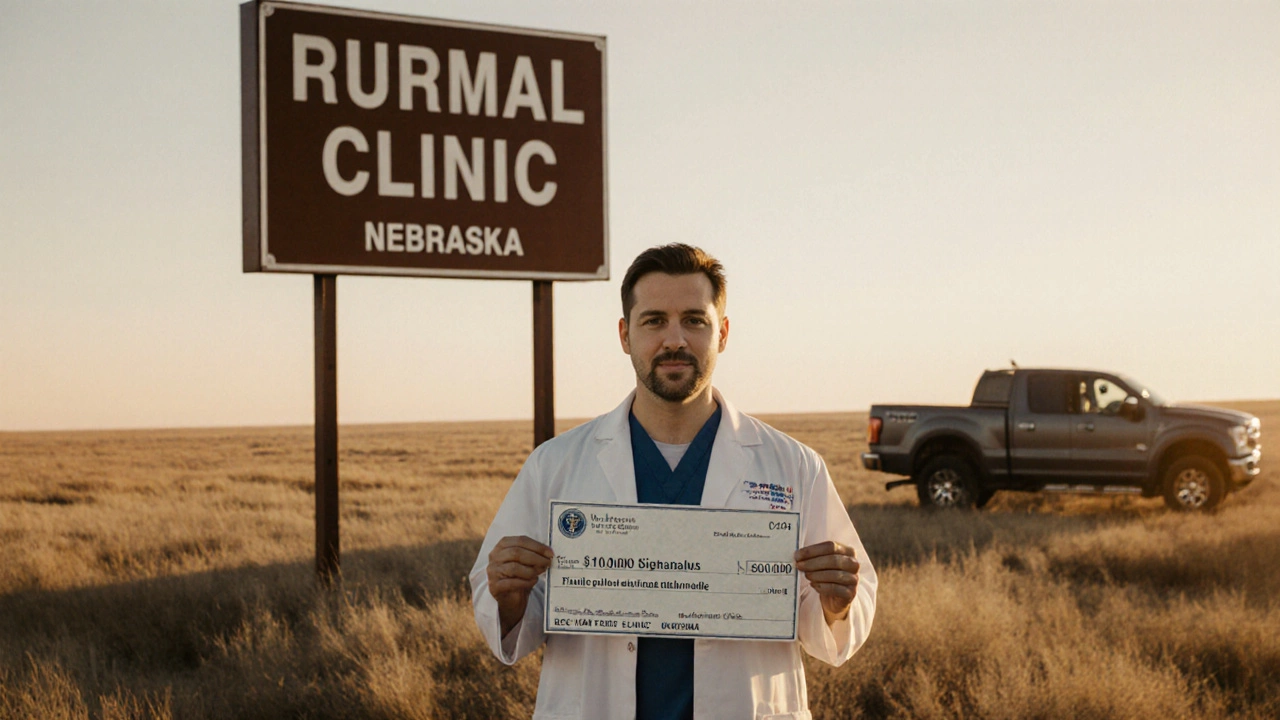
How much does an MBBS doctor make in the USA? If you’re thinking about studying medicine abroad or comparing career paths, this isn’t just a number-it’s a life decision. The answer depends on where you work, what specialty you pick, and how many years you’ve been practicing. There’s no single salary for all MBBS doctors in the U.S., but here’s what you can realistically expect.
MBBS vs. MD: What’s the Difference?
First, clear up a common confusion. In India and many other countries, the basic medical degree is called MBBS-Bachelor of Medicine, Bachelor of Surgery. In the United States, the equivalent is the MD-Doctor of Medicine. If you completed your MBBS abroad and want to practice in the U.S., you’ll need to go through the ECFMG certification process, pass the USMLE exams, and complete a residency. Only then can you get a medical license.
So when people ask about MBBS doctor salaries in the U.S., they’re really asking: How much do foreign-trained doctors earn working as licensed physicians in America? The answer is the same as for U.S.-trained MDs-because once licensed, you’re a doctor, period.
Starting Salary: First Year After Residency
After finishing medical school and a 3- to 7-year residency, most doctors start their first full-time job as attending physicians. In 2025, the average starting salary for a new attending physician in the U.S. is between $180,000 and $220,000 per year.
That’s before taxes, before benefits, before student loan payments. It’s also before you factor in location. A family medicine doctor starting in rural Nebraska might make $190,000. The same doctor in San Francisco or New York City could earn $230,000 or more due to higher cost of living and demand.
Residency pay is a different story. During training, doctors earn between $60,000 and $75,000 a year-enough to survive, but not enough to save much. Most international medical graduates (IMGs) come to the U.S. with significant debt from medical school and exam fees. It can take years to get ahead financially.
Specialty Matters More Than Anything Else
Not all doctors are paid the same. Your specialty determines your salary more than where you live or how long you’ve been practicing.
Here are 2025 salary ranges for common specialties:
- Neurosurgery: $750,000-$950,000
- Orthopedic Surgery: $600,000-$780,000
- Radiology: $500,000-$650,000
- Anesthesiology: $450,000-$580,000
- Cardiology: $470,000-$620,000
- Emergency Medicine: $380,000-$480,000
- Family Medicine: $250,000-$320,000
- Pediatrics: $240,000-$300,000
- Psychiatry: $280,000-$350,000
These numbers come from the 2025 Medscape Physician Compensation Report, which surveyed over 20,000 U.S. physicians. It’s the most reliable source available.
If you’re an MBBS graduate from India, Pakistan, or the Philippines aiming for high earnings, specialties like radiology, anesthesiology, or emergency medicine are popular targets. They offer strong pay, manageable hours (compared to surgery), and high demand.

Location, Location, Location
Where you practice makes a big difference. Doctors in states with low population density and high need-like Montana, Wyoming, or rural Texas-often get signing bonuses of $50,000 to $150,000 just to show up.
Meanwhile, in high-cost areas like Boston, Los Angeles, or Seattle, salaries are higher to offset rent and taxes. But the difference isn’t always worth it. A doctor earning $300,000 in Miami might have more take-home pay than one making $350,000 in Manhattan after paying $3,500 a month for a one-bedroom apartment.
Some hospitals in underserved areas offer loan repayment programs. If you owe $300,000 in student debt, a 3-year commitment in a Health Professional Shortage Area could wipe out your balance. That’s a real game-changer for many international doctors.
Work Setting: Hospital vs. Private Practice vs. Corporate
Where you work affects your pay structure.
- Hospital-employed doctors: Most new doctors start here. They get a fixed salary, paid time off, health insurance, and retirement plans. Pay is stable but capped. Top earners make $350,000-$450,000 in high-demand fields.
- Private practice: Higher earning potential-up to 30% more than employed doctors. But you pay for staff, rent, malpractice insurance, and billing software. Many doctors leave private practice after a few years because the stress and administrative load are overwhelming.
- Corporate clinics (like CVS MinuteClinic or Walgreens): Pay around $180,000-$220,000. Less autonomy, but predictable hours. Popular with doctors wanting work-life balance.
- Academic medical centers: Lower pay-often $200,000-$280,000-but include research time, teaching opportunities, and prestige. Good for those who want to publish or train future doctors.
How Long Until You Break Even?
Let’s say you spent 10 years studying: 5 years for MBBS in India, 1 year preparing for USMLE, 3 years residency, and 1 year for licensing. That’s 10 years of low or no income.
Medical school debt in the U.S. averages $250,000 for international students who attend U.S. private schools. Many IMGs pay off loans from their home country too. Even with a $250,000 salary, after taxes, student payments, and living costs, it can take 5-7 years before you start building real wealth.
But after that? The earning curve flattens, but doesn’t drop. Most doctors earn over $300,000 by age 35. By 45, many are making $400,000-$600,000. It’s not a fast path to riches, but it’s one of the most reliable long-term careers in the world.

What About Work-Life Balance?
High pay doesn’t mean easy life. Surgeons often work 60-80 hours a week. Emergency doctors do 12-hour shifts, 3-4 times a week. Family doctors might have 40-50 hour weeks but are on call every third night.
Some specialties offer better balance: dermatology, ophthalmology, and radiology. Many IMGs choose these because they want to raise families or have time for hobbies. Pay is still strong-$350,000-$500,000-and the lifestyle is sustainable.
It’s not just about money. It’s about whether you can live with the hours for 30 years.
Is It Worth It for an MBBS Graduate?
If you’re from India, Bangladesh, or Nigeria and you’re wondering if moving to the U.S. is worth the struggle-yes, if you’re prepared.
You’ll need:
- Passing scores on USMLE Step 1, Step 2 CK, and Step 2 CS (now replaced by Step 3)
- ECFMG certification
- A residency spot (highly competitive for IMGs)
- Visa sponsorship (usually J-1 or H-1B)
- Patience. The whole process takes 3-5 years after MBBS.
But the payoff is real. A doctor earning $300,000 in the U.S. has more purchasing power than a specialist earning ₹40 lakh in Mumbai. Plus, you get access to better equipment, less corruption, and a clearer career path.
Many Indian MBBS graduates who make it to the U.S. say the hardest part isn’t the exams-it’s the loneliness. Being far from family, dealing with cultural differences, and feeling like an outsider in the hospital hierarchy takes a toll.
Bottom Line: What You Can Expect
Here’s a quick summary:
- Starting salary (first attending job): $180,000-$220,000
- Mid-career (5-10 years): $250,000-$400,000
- Top specialists (15+ years): $500,000-$950,000
- Lowest-paid specialties: Pediatrics, Family Medicine ($240,000-$320,000)
- Highest-paid specialties: Neurosurgery, Orthopedics ($750,000+)
It’s not a shortcut. It’s a marathon with steep hills. But if you’re willing to put in the work, the U.S. offers one of the highest-paying, most respected medical careers in the world.
Is an MBBS degree from India valid in the USA?
No, not directly. An MBBS degree from India is recognized as equivalent to an MD in the U.S., but you must pass the USMLE exams, get ECFMG certification, complete a residency, and obtain a state medical license to practice. Your degree alone doesn’t let you treat patients.
Do MBBS doctors earn more in the USA than in India?
Yes, significantly. A senior doctor in India might earn ₹20-40 lakh per year (about $24,000-$48,000). In the U.S., even a starting physician earns $180,000-$220,000. After taxes and cost of living, the difference is still 5-10 times higher in the U.S.
Which medical specialty is easiest to get into in the USA for MBBS graduates?
Family medicine, psychiatry, and internal medicine are the most accessible for international medical graduates (IMGs). These fields have higher match rates in the residency match process (NRMP) compared to competitive specialties like neurosurgery or dermatology. They also have more positions available nationwide.
How long does it take to become a licensed doctor in the USA after MBBS?
It typically takes 4 to 6 years after completing MBBS. This includes 1-2 years to prepare for and pass the USMLE exams, 1 year to get ECFMG certification, and 3-7 years for residency, depending on your specialty. Some take longer if they need to retake exams or wait for a residency spot.
Can MBBS doctors work in the USA without passing USMLE?
No. Without passing USMLE Steps 1, 2 CK, and 3, and obtaining ECFMG certification, you cannot enter a U.S. residency program or get a medical license. There are no exceptions. Some roles like medical research or pharmaceutical jobs don’t require a license, but you can’t treat patients.




